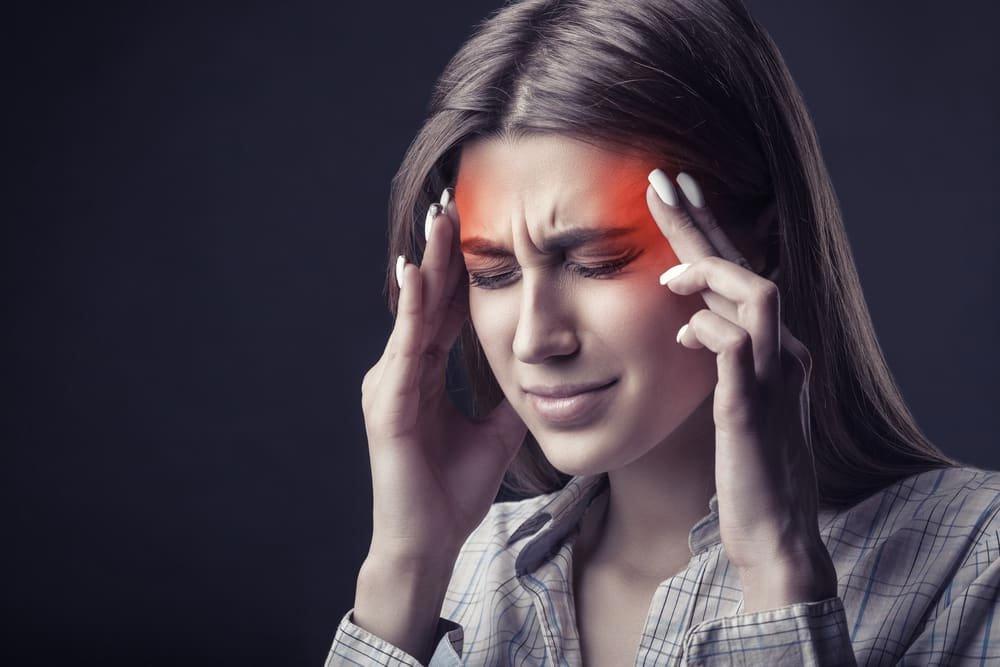Migraines are far more than “bad headaches.” They’re a complex neurological condition that can affect the entire body — often bringing nausea, light sensitivity, fatigue, and days of lost productivity.
Most people turn first to medications for help, and many find relief. But migraine drugs — from triptans to the latest CGRP inhibitors — can also bring unwanted side effects, and sometimes they stop working over time. That’s why growing research interest is turning toward manual lymph drainage (MLD), a gentle, hands-on therapy that supports the body’s natural healing and detoxification systems.
When Medication Comes at a Cost
Migraine medications generally fall into two groups: acute treatments (taken during an attack) and preventive medications (taken regularly to reduce frequency). Both can be helpful — but they’re not without risks.
- Triptans, a common prescription, can cause dizziness, fatigue, and chest or throat tightness. In rare cases, they may trigger cardiovascular issues and aren’t recommended for people with heart disease or high blood pressure.
- Newer CGRP inhibitors tend to have fewer side effects, but some users experience digestive problems, constipation, or injection-site reactions. Long-term safety data is still being studied.
- Preventive drugs such as beta-blockers, antidepressants, or antiseizure medications may cause fatigue, weight changes, cognitive fog, mood shifts and/or suicidal thoughts.
Using too much of any acute medication can even lead to medication-overuse headaches — a frustrating rebound effect where the very drugs meant to stop migraines end up making them more frequent.
For people who prefer a more natural or low-risk approach, manual lymph drainage offers a gentle, evidence-supported alternative that works with the body rather than against it.
What Is Manual Lymph Drainage (MLD)?
MLD is a light, rhythmic technique performed by trained massage or lymphatic therapy professionals. Its purpose is to gently stimulate the lymphatic system — the network of vessels and nodes that helps clear waste, toxins, and excess fluid from tissues.
When applied to the head, neck, and shoulders, MLD can:
- Reduce tissue congestion and improve blood and lymph flow in areas often tense or tight during migraines.
- Ease pressure and inflammation, helping the body clear metabolic waste that may irritate nerves or vessels.
- Calm the nervous system, encouraging the body to shift from a “fight or flight” state into a “rest and recover” mode.
- Relax muscular and fascial tension, a common migraine trigger.
What the Research Says
Although research on MLD for migraine is still emerging, several studies show promising results.
- In a 2016 clinical trial in Neurological Sciences (Happe et al.), people who received lymphatic drainage had significantly fewer migraine days and needed less pain medication compared to those who didn’t receive treatment.
- A 2025 randomized controlled trial published in the Journal of Oral & Facial Pain and Headache found that both connective tissue massage and MLD reduced migraine pain and improved quality of life, with MLD showing stronger results.
- Earlier studies also suggest that MLD may influence the autonomic nervous system — reducing overactivation of the “fight or flight” response that contributes to migraine symptoms.
- Newer brain-imaging research shows that people with migraines often have impaired lymphatic and glymphatic function — systems that help clear waste from brain tissues. These findings support the theory that enhancing drainage and circulation could help reduce the frequency or intensity of attacks (Annals of Neurology, 2024; The Journal of Headache and Pain, 2024–2025).
In short: MLD doesn’t just treat the pain — it may help address one of the root causes behind it.
Why Try MLD Before Medications
Medications certainly have their place — especially for severe or chronic migraines. But MLD offers a low-risk, noninvasive way to support the body’s self-regulating systems before turning to pharmaceuticals.
Unlike drugs that suppress symptoms, MLD works with the body’s natural detoxification and circulation, helping restore balance rather than override it. It can be safely combined with other holistic approaches like hydration, gentle movement, stress reduction, and posture correction — or used alongside medical treatments for added benefit.
Most importantly, MLD has no systemic side effects when performed properly, making it a safe first step or complementary option for people who want to avoid medication-related risks.
The Takeaway
Migraines are multifaceted — and so should be their treatment. Manual lymph drainage offers a safe, science-backed way to support the body’s healing systems while potentially reducing migraine frequency and medication reliance.
While more large-scale studies are needed, the existing evidence and real-world clinical results make one thing clear:
Before reaching for a prescription bottle, it might be worth trying the power of gentle touch and natural flow.
Selected References
- Happe S, Peikert A, Siegert R, Evers S. Neurological Sciences. 2016;37(8):1305–1311. https://pubmed.ncbi.nlm.nih.gov/27338942/
- Yıldırım Bulut M, Özdemir O. J Oral Facial Pain Headache. 2025. https://www.jofph.com/articles/10.22514/jofph.2025.054
- Kümmler Ö. Manual lymph drainage in migraine treatment — a pathophysiologic explanatory model. https://pubmed.ncbi.nlm.nih.gov/2672665/
- Lee MJ, et al. Annals of Neurology. 2024. https://pubmed.ncbi.nlm.nih.gov/38055324/
- Zhang Y, et al. The Journal of Headache and Pain. 2024–2025. https://thejournalofheadacheandpain.biomedcentral.com

